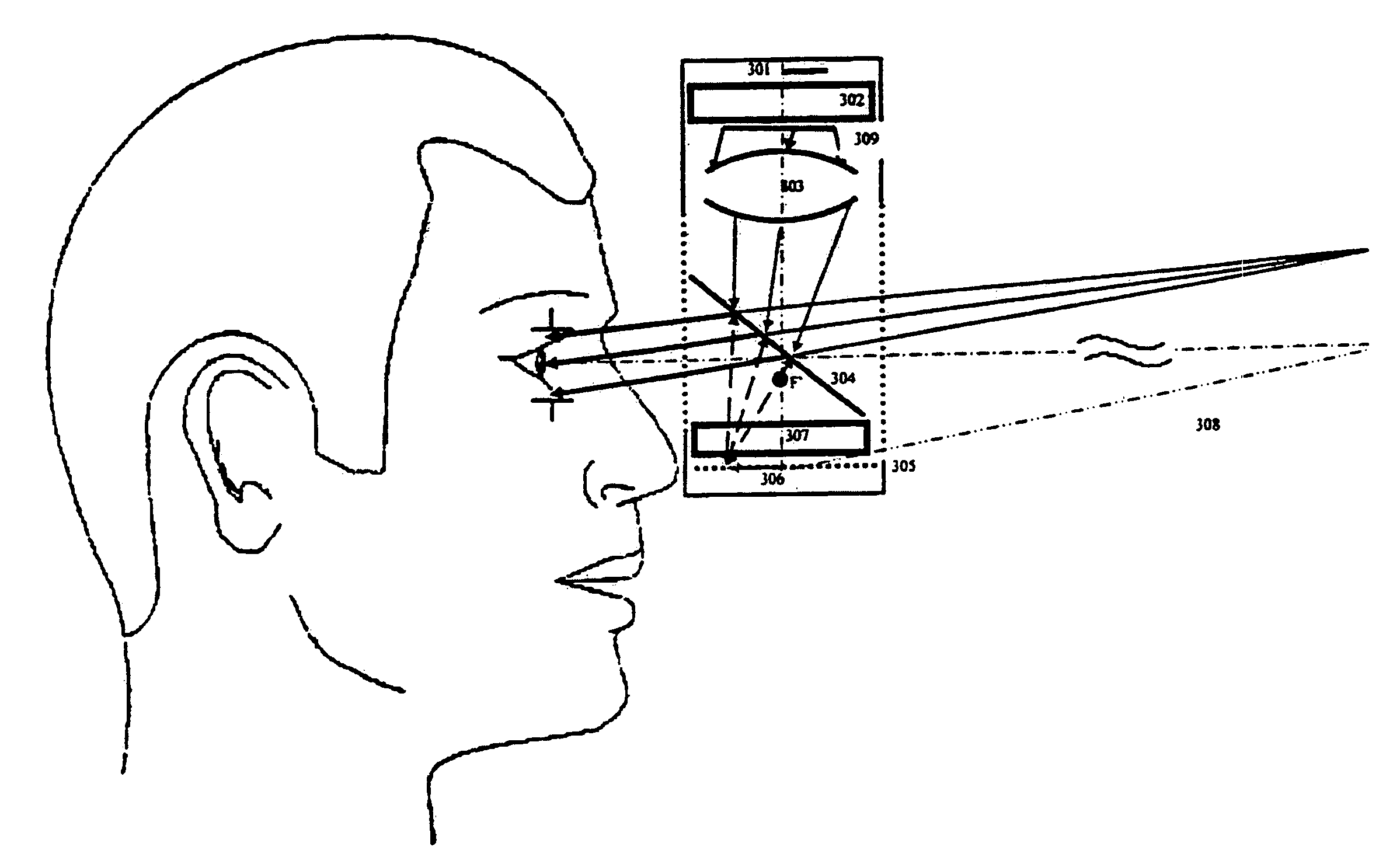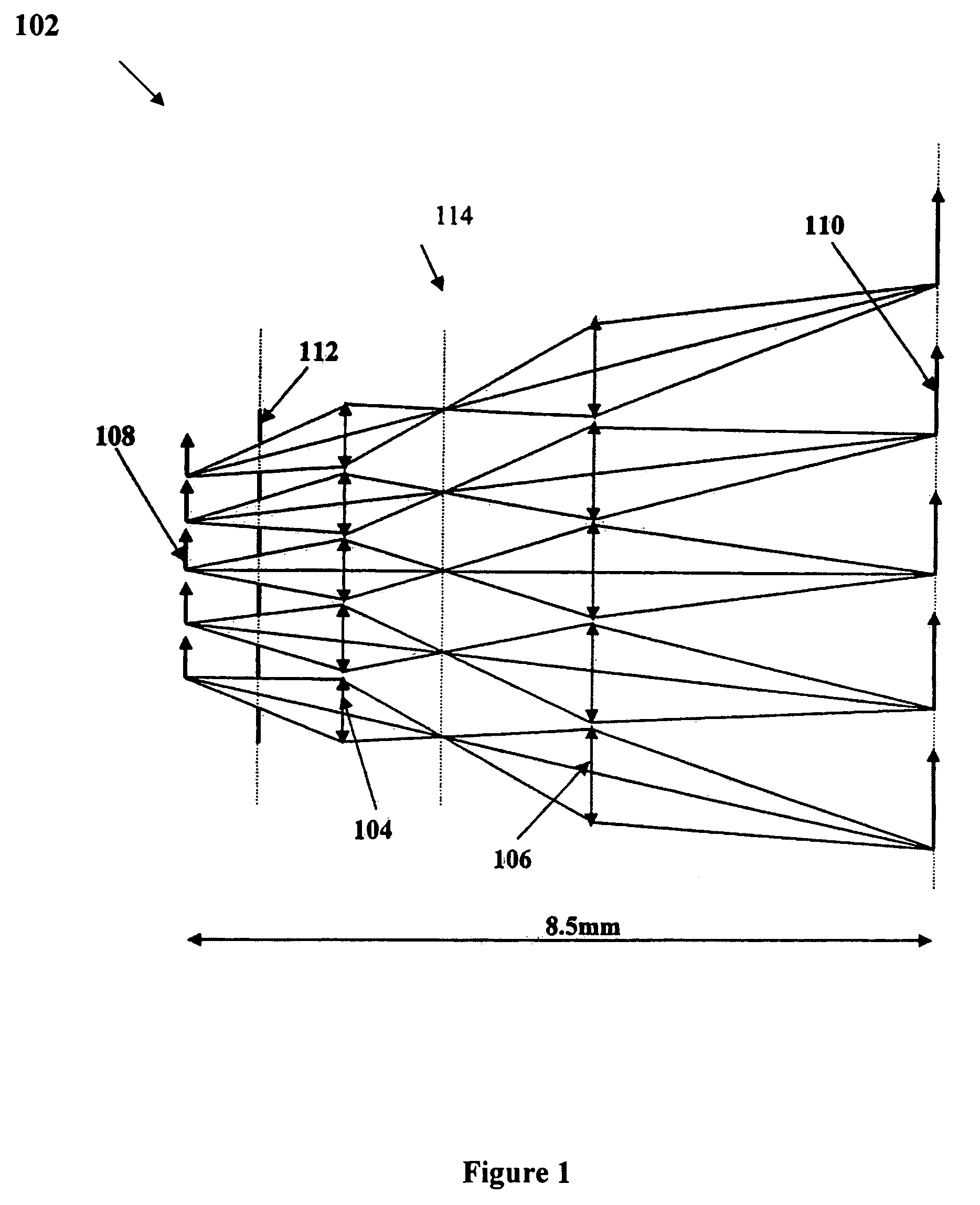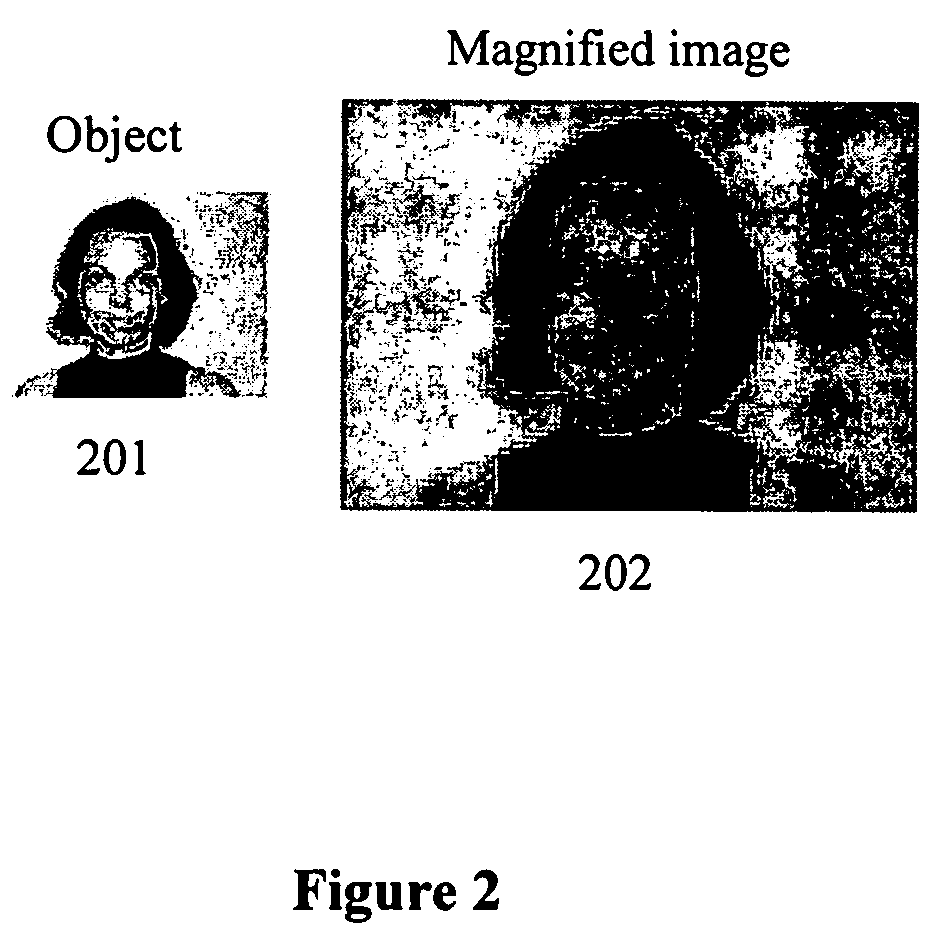Compact microlenslet arrays imager
a microlenslet array and imager technology, applied in optics, instruments, diffraction gratings, etc., can solve the problems of large distortion, disadvantageous wide screen displays, and occlusion contradictions, and achieve the effect of compactness
- Summary
- Abstract
- Description
- Claims
- Application Information
AI Technical Summary
Benefits of technology
Problems solved by technology
Method used
Image
Examples
Embodiment Construction
[0020]Before explaining the disclosed embodiments of the present invention in detail, it is to be understood that the invention is not limited in its application to the details of the particular arrangements shown since the invention is capable of other embodiments. Also, the terminology used herein is for the purpose of description and not of limitation.
[0021]As previously noted, this invention claims the benefit of priority to U.S. Provisional Patent Application No. 60 / 492,453 filed Aug. 4, 2004, and this application is a Continuation-In-Part of both U.S. patent application Ser. No. 10 / 285,855 filed Nov. 1, 2002, now allowed, and U.S. patent application Ser. No. 10 / 418,623 filed Apr. 19, 2003 which are both a Continuation-In-Part of U.S. patent application Ser. No. 10 / 090,070 filed Mar. 1, 2002, now U.S. Pat. No. 6,731,434, which claimed the benefit of priority to U.S. provisional application 60 / 292,942 filed May 23, 2001, all of which are incorporated by reference in the subject ...
PUM
 Login to View More
Login to View More Abstract
Description
Claims
Application Information
 Login to View More
Login to View More - R&D
- Intellectual Property
- Life Sciences
- Materials
- Tech Scout
- Unparalleled Data Quality
- Higher Quality Content
- 60% Fewer Hallucinations
Browse by: Latest US Patents, China's latest patents, Technical Efficacy Thesaurus, Application Domain, Technology Topic, Popular Technical Reports.
© 2025 PatSnap. All rights reserved.Legal|Privacy policy|Modern Slavery Act Transparency Statement|Sitemap|About US| Contact US: help@patsnap.com



